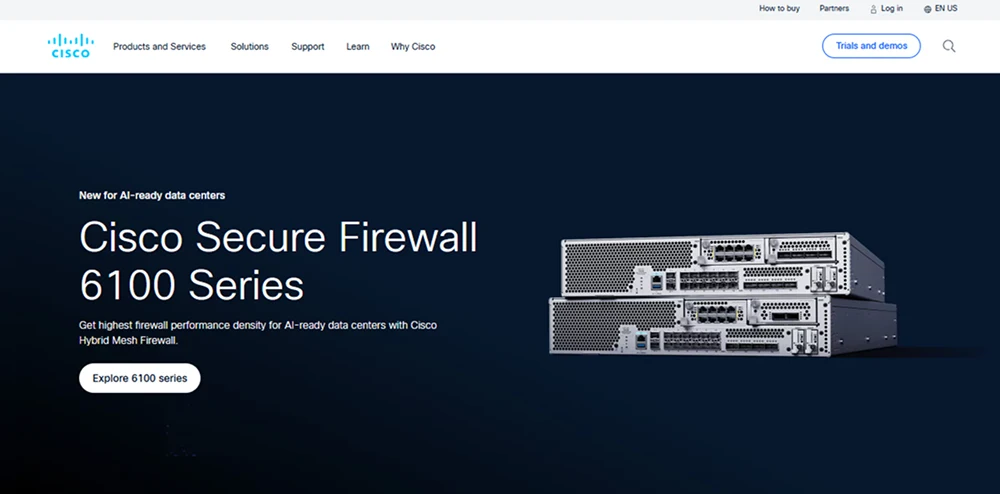Cisco Meraki(MX Security Appliances) Overview & 2025 Industry Position
Cisco Meraki(MX Security Appliances) represents the forefront of cloud-managed network security, merging robust performance with exceptional simplicity. In 2025, as businesses increasingly face complex security threats, this line of security appliances continues to be a standout for organizations prioritizing clarity, centralized control, and scalability. Positioned within a competitive edge of the Cisco ecosystem, Meraki MX products are built for SMBs to large enterprises seeking reliable, zero-touch deployment and unified threat management. As cyber resilience becomes a boardroom imperative, Cisco Meraki(MX Security Appliances) rises to meet—and exceed—2025’s demands.
From Launch to 2025: Cisco Meraki(MX Security Appliances)’s Journey
Introduced in the early 2010s after Cisco acquired Meraki in 2012, the MX series has evolved from basic UTM (Unified Threat Management) devices into fully cloud-integrated SD-WAN security hubs. Significant milestones include:
- 2013: Initial MX models enter the market, emphasizing cloud-based management.
- 2015: Launch of Auto VPN and high-availability pairing.
- 2018: Native SD-WAN features roll out across the MX line.
- 2020: Introduction of cellular failover support and enhanced malware protection.
- 2023: Addition of threat grid and Cisco Umbrella-based AI for proactive monitoring.
- 2025: Full integration with Cisco SecureX platform for seamless SecOps unification.
Strategy for 2025: To consolidate network and security operations into a single, intuitive cloud edge platform that scales with hybrid workforces and decentralized infrastructure.

Cisco Meraki(MX Security Appliances) Key Features
From SMBs to large enterprises, the robust MX series packs features to meet diverse needs:
- Cloud-based management: Instant setup, remote updates, and centralized control.
- Integrated SD-WAN: Dynamic path control and bandwidth optimization.
- Autonomous security: Cisco Talos threat intelligence and integrated intrusion prevention.
- Layer 7 traffic shaping: Manage app priorities with ease.
- Zero-touch provisioning: Streamlined deployment across multiple locations.
- Advanced analytics: Real-time data flows, anomaly tracking.
Workflow & UX
Day-to-day operations on the Meraki platform are designed to be intuitive and visual, eliminating reliance on terminal-based configurations. A single login enables administrators to oversee hundreds of sites, discover anomalies, and push firewall policies across devices. For common tasks—like VLAN creation, subnetting, or firmware updates—the workflow uses guided status wizards and color-coded alerts, helping IT staff respond faster with fewer errors.
Pro Tip: Enable “Security Center Overview” to monitor threat trends and enable geo-based filtering within minutes of deployment.
Cisco Meraki(MX Security Appliances) Pricing Analysis & Value Metrics
As of July 2025, Cisco Meraki(MX Security Appliances) uses a hardware + license-tier model. MX appliances require an annual or multi-year license for cloud-hosted features.
| Model | Recommended Users | License Tier | Annual Price (USD) |
|---|---|---|---|
| MX67 | 50 | Enterprise / Advanced Security | $275 / $595 |
| MX95 | 250 | Enterprise / Advanced Security | $1,399 / $2,199 |
| MX250 | 2000 | Enterprise / Advanced Security | $5,999 / $7,999 |
Value Assessment: Although the upfront costs are higher compared to DIY firewalls, the simplicity, scalability, and automated updates reduce total operational overhead.
The Competitive Landscape
| Provider | Strengths | Ideal For | Avg. Cost Range |
|---|---|---|---|
| Fortinet (FortiGate) | High DPI inspection, flexible licensing | Enterprises, security labs | $$$ |
| SonicWall | Affordable, solid threat model | SMBs | $$ |
| Cisco Meraki(MX Security Appliances) | Cloud-managed, easy UX | Retail, education, franchises | $$$ |
| Ubiquiti | Low-cost hardware, DIY interface | Home labs, tech-savvy SMBs | $ |
Common Use Cases
- Education campuses with multiple subnets requiring centralized control and strict firewalls.
- Retail chains using site-to-site VPNs for HQ and POS connectivity.
- Healthcare clinics managing compliance and secure patient access to web portals.
- Franchise operators deploying single-stack plug-and-play security per location.
Integrations & Ecosystem Fit
Cisco Meraki(MX Security Appliances) integrates natively with platforms like:
- Cisco Umbrella: For DNS filtering and intelligent gateway controls.
- Splunk: For SIEM and advanced security analytics.
- Active Directory: Role-based traffic policies and logs.
- Google Workspace & Microsoft 365: Cloud app visibility and QoS tuning.
Pros & Cons
- Pros: Clean UI, automated updates, excellent multi-site management, strong support community, reliable failover systems.
- Cons: Pricing can escalate with Advanced Security license, limited customization for expert-level tuning, dependency on cloud portal availability.
Final Thoughts
Cisco Meraki(MX Security Appliances) offers unmatched operational simplicity for organizations seeking scalable cloud-based security without sacrificing depth or control. It’s best suited for those who prioritize reliability, visual management, and tight integrations over granular low-level configurations. Enterprises looking toward widespread or multi-branch deployments will especially benefit in 2025’s hybrid-heavy world.
Cisco Meraki(MX Security Appliances) FAQ
Yes. Many MX models support integrated LTE failover using USB modems or built-in cellular capabilities for automatic WAN backup.
Enterprise includes essential networking and VPN features, while Advanced Security adds intrusion prevention, malware protection, content filtering, and Threat Grid integration.
No. While MX devices can route traffic during brief outages, full configuration, policy updates, and logs require cloud connectivity to Meraki Dashboard.
Yes. Features like audit logging, geographic restrictions, role-based control, and integration with log retention tools help support HIPAA, SOC 2, PCI-DSS, and GDPR compliance.
Absolutely. That’s a core advantage—the Meraki dashboard enables single-pane-of-glass visibility and policy enforcement across thousands of devices and sites.